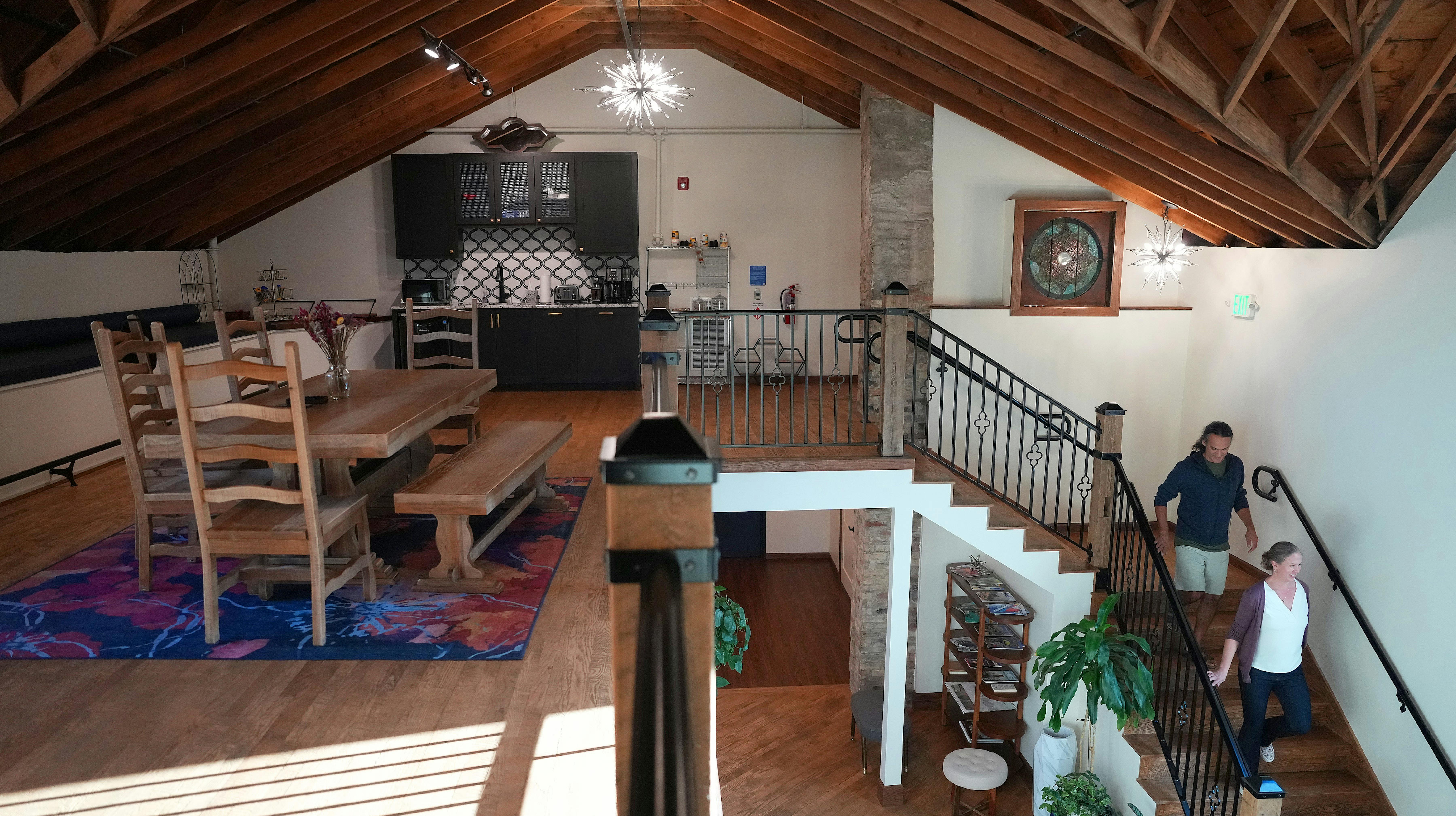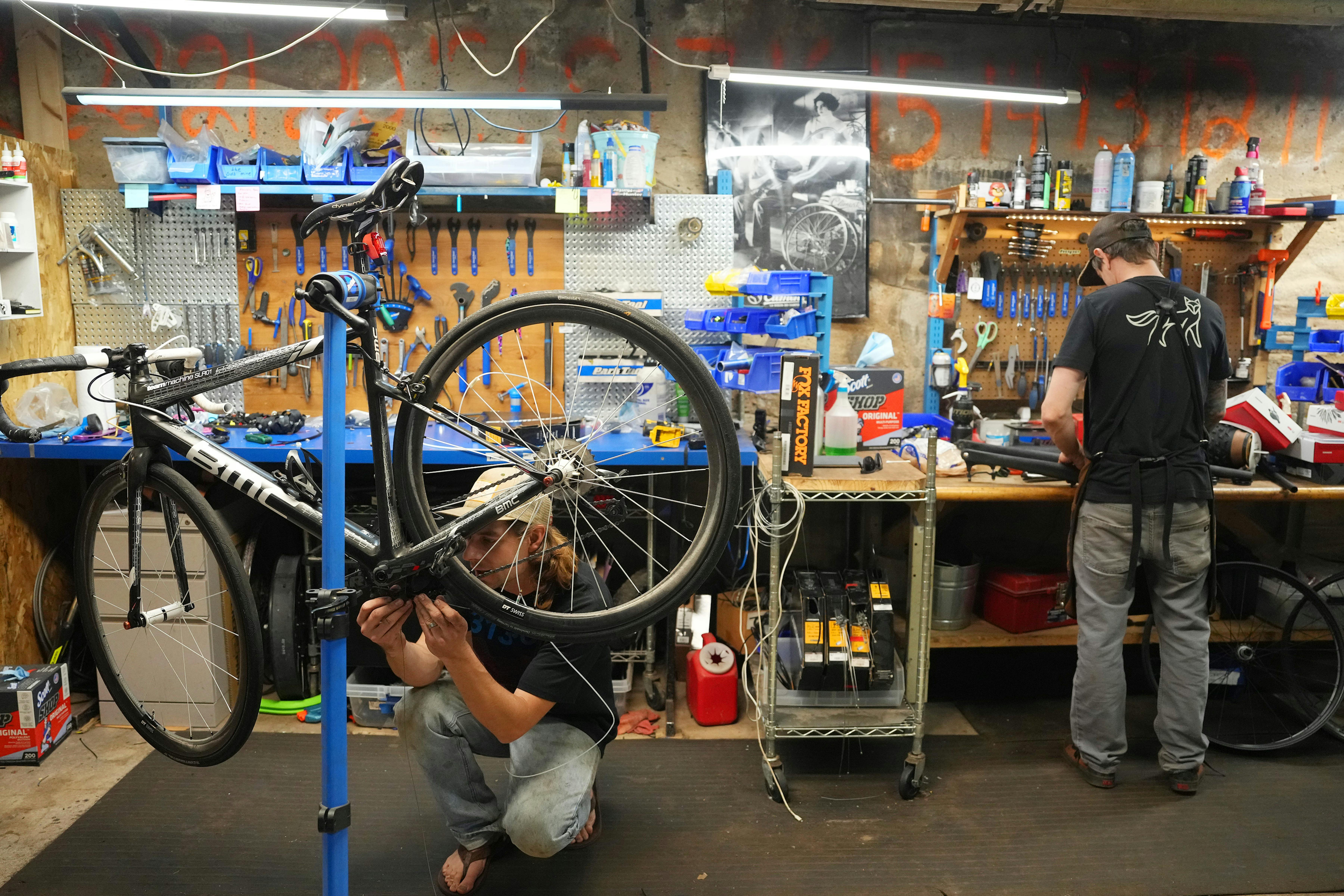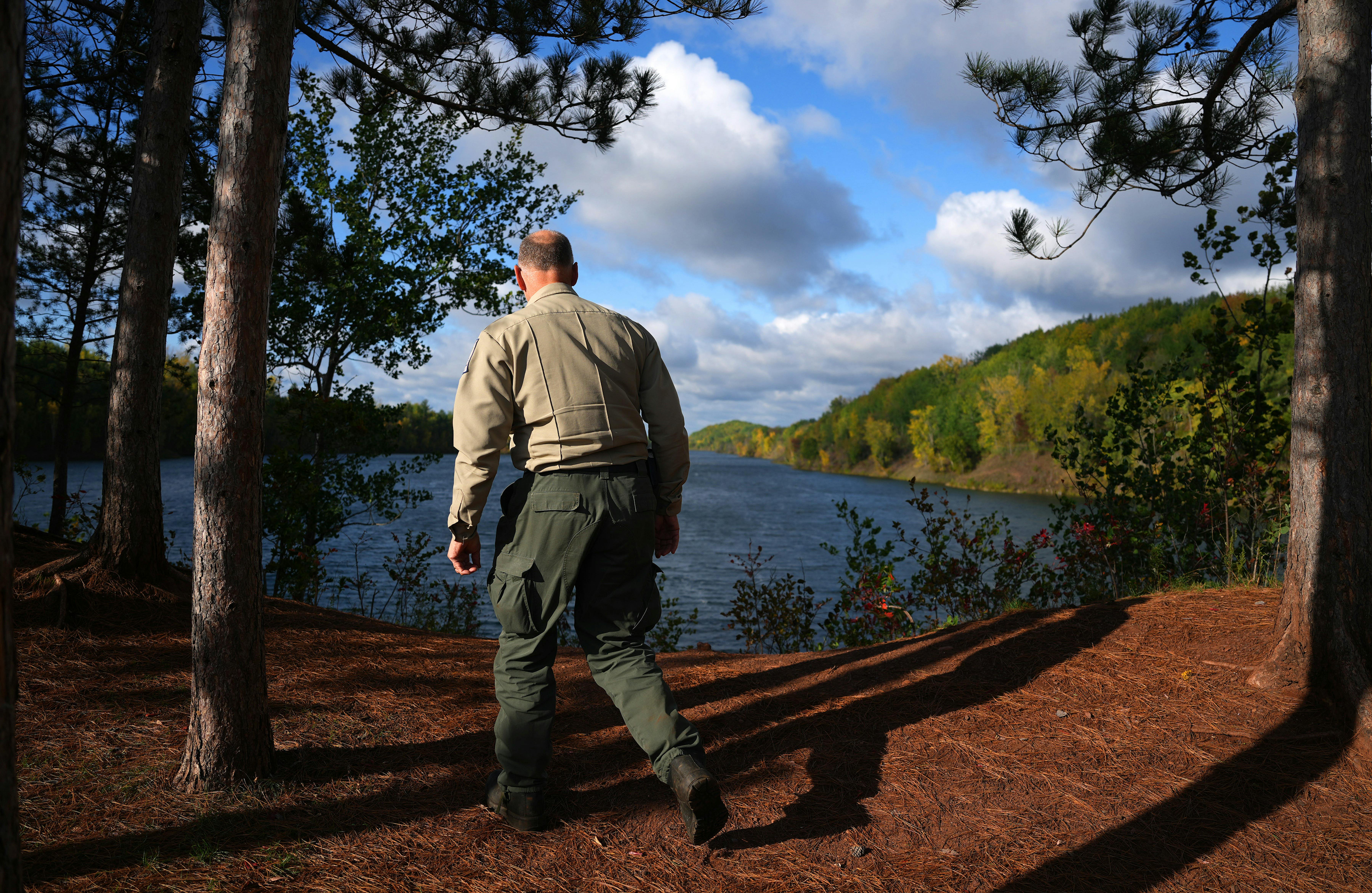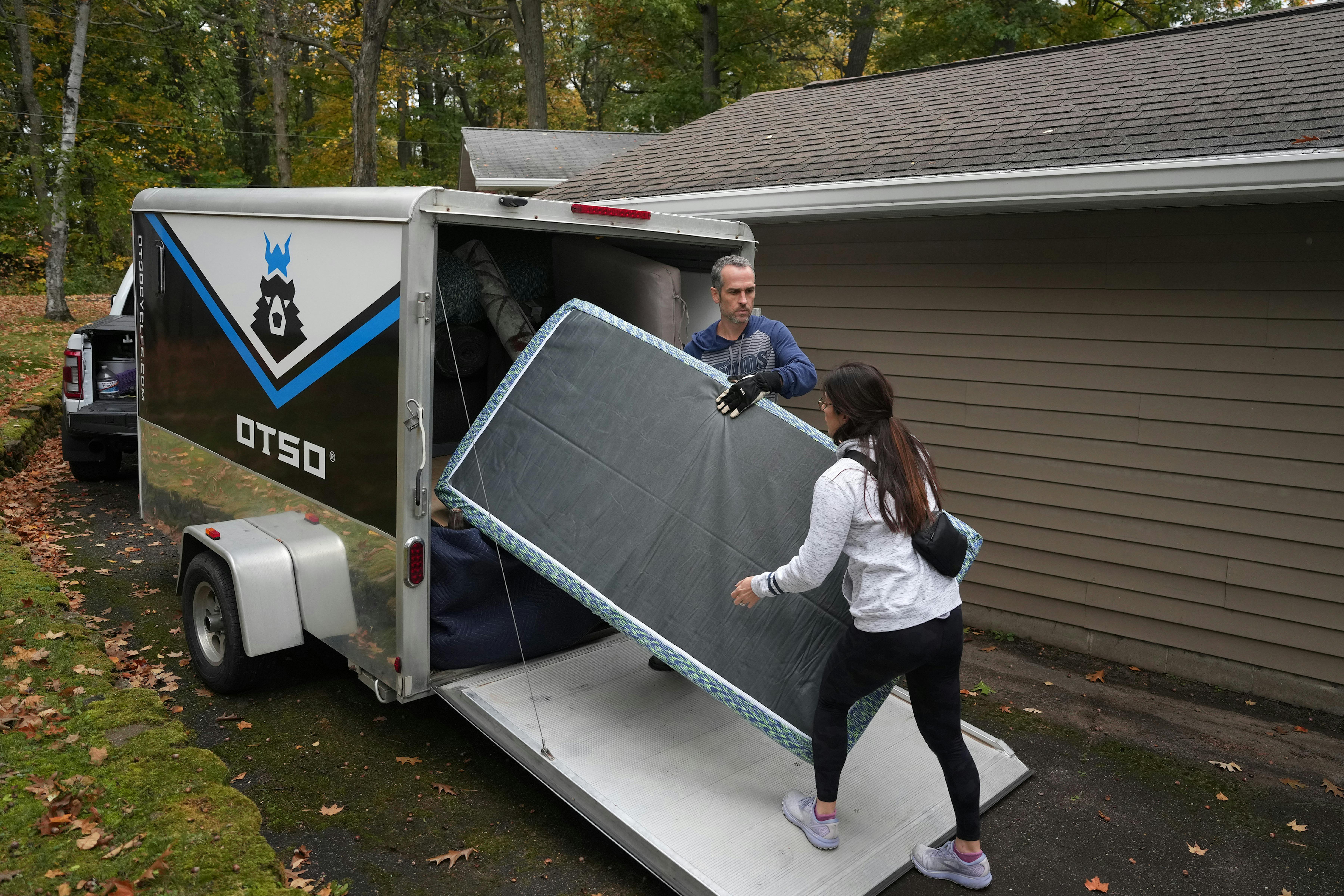CROSBY, Minn. — Edgar and Stephanie Morales had been coming from the Twin Cities to this mining town on Minnesota's Iron Range for years to ride the popular mountain-bike trails at Cuyuna Country State Recreation Area.
When they heard an abandoned old church was for sale in summer 2020, they bought it without really knowing what they'd do: a duplex? A dorm-style hostel? They just knew they loved the area and didn't want to be stereotypical urban invaders capitalizing on the bicycle-fueled boom.
As Cuyuna has skyrocketed in popularity, with COVID tripling the annual number of visitors to nearly half a million — many of whom keep returning — the twin mining towns of Crosby and Ironton have worked through their initial growing pains. Now they have settled into a new reality: mining isn't coming back, as many had hoped. But tourism has transformed the community and provided an economic engine the area has lacked for a generation or more. And outsiders once eyed with suspicion have become part of the fabric of the area.

"We've tried from the very beginning to not be the Citiots," Stephanie Morales said, using the word some rural Minnesotans use to poke fun at arrogant Twin Cities folk. "We don't want to be the outsiders from the Cities who just roll in and take over and tell you how it's done."
For years, they labored at turning the old church that didn't even have a sewage hookup into an elegant eight-room boutique hotel. The Sanctuary now serves tourists who flock to Minnesota's most-visited state recreation area.
There's still resentment. Some locals have been priced out as a large portion of homes have turned into Airbnbs. But time has brought a new sense of acceptance and identity.
Now, many here say, locals who've traditionally preferred hunting and ATV-riding and snowmobiles have come to appreciate this haven for so-called silent sports — biking, paddling, skiing — that often attract city dwellers. It's Cabela's culture and REI culture side by side, and it appears to work.
"It was tough to see the benefit of the trails at first," Edgar Morales said. "We got some resistance. We told people what we were doing, that we're investing in town."
While the Moraleses haven't moved here full-time, they keep a room for themselves at the hotel. But after years of sourcing locally for hotel renovations, frequenting restaurants and being seen around town, they feel as accepted here as mountain-bike culture has become.
"The biggest compliment I got," Edgar Morales said, "was when somebody called me an Iron Ranger: 'You're a Ranger now.' And I thought, 'Wow! I really am.' "
Abandoned mines big asset
A generation ago, the boom times were already decades past. The pride of fueling American industry for two world wars was a nostalgia-tinged memory. And the Cuyuna Range's abandoned mines, once filled with manganese-rich iron ore but now a desolate landscape, had turned into a dumping ground.
Old sofas became target practice for young hunters. Old cars were pushed into the bottom of the crystal-clear waters in abandoned mining pits. Old tires became bonfire fuel for high-schoolers' keg parties; local police sniffed out offending teens from shoes and trucks colored with red Cuyuna dirt. It was a free-for-all.
The Cuyuna Range's 32 mines peaked mid-century, with the final mining truck pulling out of town in 1984. Crosby's Scorpion snowmobile manufacturing facility closed around the same time, an economic double-whammy that cost the towns more than a third of their population from a half-century before.
The adjacent Crow Wing County towns were simply managing their decline — old mining towns with vanishing job opportunities for young people and a future that seemed only more bleak. Luke Lundquist remembers those days, when his dad commuted to St. Cloud for work, seeing family only on weekends. Lundquist wanted to stay in the area after graduating from Crosby-Ironton High School in 1990, but when he got laid off as a machinist, odd jobs just couldn't pay the bills. He moved to the Twin Cities.
Still, plenty of locals seemed content: a quiet small-town life with a neighboring outdoor playground of lakes and land they claimed as their own.
What it took to turn these towns into what they are today — a Midwestern mountain-biking mecca with a thriving business climate — was Barb Grove's vision of the abandoned mines as the area's biggest asset. Instead of a moonscape, Grove, director of Cuyuna Range Economic Development in the 1980s and 1990s, saw 5,000 mine-rutted, undevelopable, potentially beautiful acres abutting town. New-growth aspens and pines re-wilded the old mines, turning red into green. Locals held cleanup parties and built a modest six-mile paved bike trail. Mountain bikers saw the flowing landscape as a blank canvas for their growing sport.

Before the first mountain-bike trails opened in 2011, Cuyuna Country State Recreation Area had a bit more than 100,000 visitors annually. That number spiked to more than 180,000 by 2012, and stayed in that range until COVID forced people to explore Minnesota's outdoors. In 2020, Cuyuna boomed to nearly half a million visitors, and much of that COVID-era popularity has stuck; nearly 350,000 people visited Cuyuna in 2022.
Today, 70 miles of interconnected one-way trails weave through the towns as seamlessly as any mountain-biking trail network in America. They capitalize on other amenities, too: lakes as deep as 500 feet stocked with trout, clear waters perfect for scuba training, fat-tire bikes and snowshoeing in winter, canoeing the chain of lakes some liken to a mini-Boundary Waters, with park managers aiming to complete a half-dozen portages by the end of next year. All a two-hour drive from the Twin Cities — and within cellphone range.
People like Lundquist saw opportunities where there hadn't been opportunities before. He opened an Ironton bike shop, Cykel, just as COVID descended. Now his business employs a dozen people, selling name brands and building 100 custom-made mountain bikes a year. His family also opened a coffee shop, restaurant and cocktail bar down the street. His two 20-something daughters relocated here.
"Growing up here we loved it — we didn't know any better. There wasn't a lot of money, but we had fun," Lundquist said. "But lots of kids my age moved away because there was no opportunity for jobs. Thirty years later, we're trying to move back."
But growth brought pains. Families who'd been here for generations didn't always appreciate vehicles and bikes flooding the streets. Crosby's mayor, Diane Cash, estimates nearly 50 of Crosby's 700 homes are now short-term rentals — 7% of the housing stock. Ironton's city council banned short-term rentals altogether until a newly elected council overturned the law this summer, capping short-term rentals at 3% of the housing stock.
The biggest fear among people who've been here for generations is that tourism swallows up town — a Minnesota version of Park City, Utah.
"When we were in school, it was really turning into a ghost town, Main Street boarded up," said Jackie Holmes, whose family has lived here for more than a century. "But now we don't want it to become too much of a tourist destination where we don't have locals who live here and work here."
Previously, downtown Crosby was filled with antique shops, a symbol of good times past. Now it's hip, "a mountain town in mountain-less Minnesota," said Aaron Hautala, a born-and-raised Iron Ranger and local businessman who is Cuyuna Country's biggest evangelist. There are a half-dozen restaurants, a cocktail bar, a brewery, a downtown loft hotel, an indoor pickleball court, a smattering of boutique stores and few open parking spots.
"To think," said Edgar Morales, who turned the old church into the new hotel, "that a mining town would be into charcuterie."


"The mines are still feeding the town"
A bald eagle chirped high above as Barry Osborne got out of his Minnesota Department of Natural Resources truck and peered to Huntington Mine Lake below.
Osborne, manager of Cuyuna Country State Recreation Area, stood atop the park's highest point, a greened-over pile of iron-ore tailings 200 feet high. Autumnal leaves were changing, with mountain-bike trails interspersed throughout the woods.
"You look at the old pictures, and you have to look hard to see a tree," Osborne said.
Mountain-biking is often cited as the sole reason for Crosby and Ironton's renaissance. That view irks some longtime locals. Mines built these towns; without mining, this area would have neither lakes nor perfect mountain-biking landscapes.
On a recent evening, the mountain bike team from Crosby-Ironton High School pedaled past Crosby's bustling downtown, where renovation projects on several older buildings were underway. Josh Jacobson, who moved here from Duluth 14 years ago for a job at the hospital and last year was elected mayor of Ironton, cracked open a beer on his porch and spoke of a future that honors the past.
Mountain biking isn't changing these mining towns into something completely different, Jacobson argued. It's building on that history.

"Everybody who's been here a long time forgets it was created by people who hadn't been here long," he said. "The people who dug the pits came here from different countries. They came here because there was opportunity."
"The mines are still feeding the town," he continued. "It was the mine slag that got piled up to build trails on. Anybody who appreciates the mines should smile that they are still what's bringing growth and people and appreciation to our community. It's come full circle."